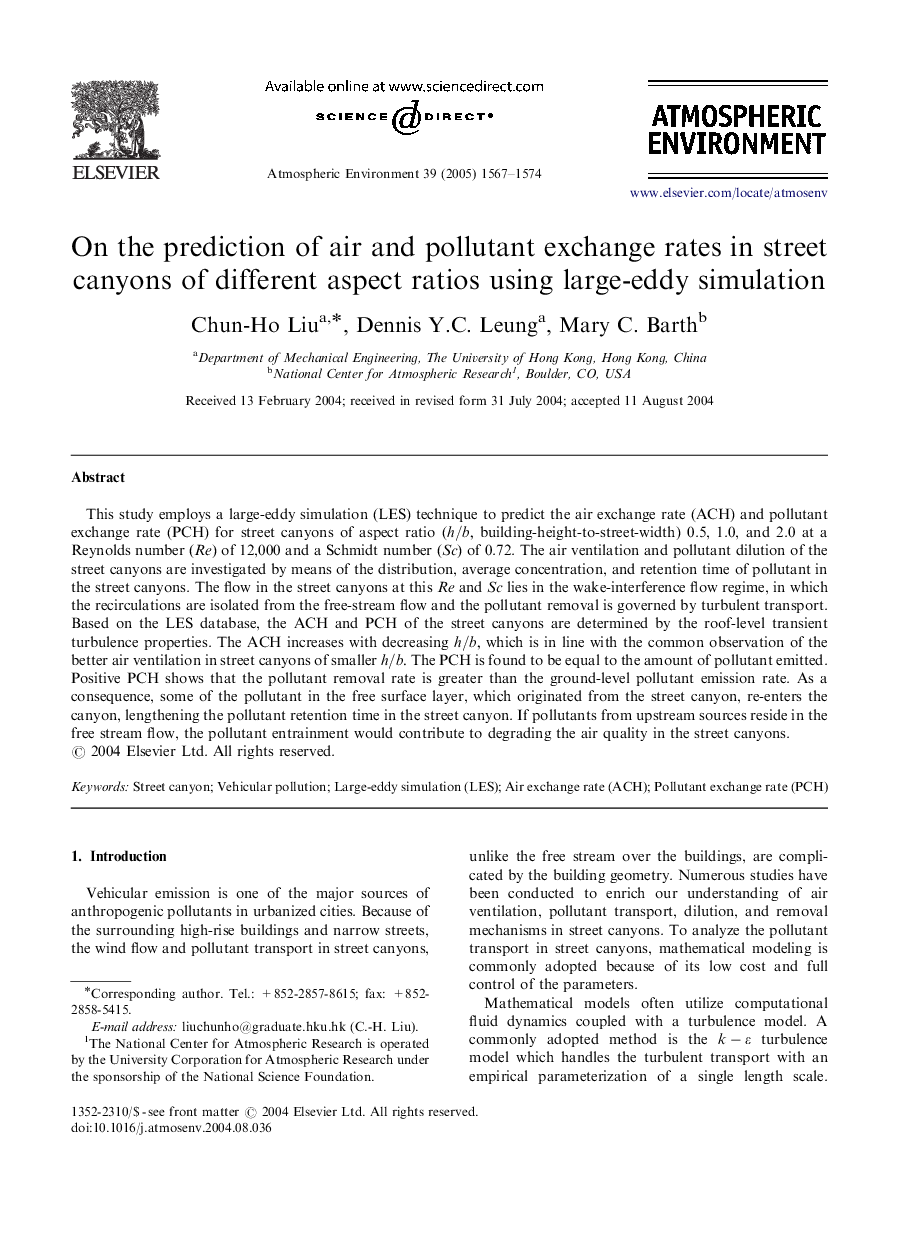| Article ID | Journal | Published Year | Pages | File Type |
|---|---|---|---|---|
| 9458744 | Atmospheric Environment | 2005 | 8 Pages |
Abstract
This study employs a large-eddy simulation (LES) technique to predict the air exchange rate (ACH) and pollutant exchange rate (PCH) for street canyons of aspect ratio (h/b, building-height-to-street-width) 0.5, 1.0, and 2.0 at a Reynolds number (Re) of 12,000 and a Schmidt number (Sc) of 0.72. The air ventilation and pollutant dilution of the street canyons are investigated by means of the distribution, average concentration, and retention time of pollutant in the street canyons. The flow in the street canyons at this Re and Sc lies in the wake-interference flow regime, in which the recirculations are isolated from the free-stream flow and the pollutant removal is governed by turbulent transport. Based on the LES database, the ACH and PCH of the street canyons are determined by the roof-level transient turbulence properties. The ACH increases with decreasing h/b, which is in line with the common observation of the better air ventilation in street canyons of smaller h/b. The PCH is found to be equal to the amount of pollutant emitted. Positive PCH shows that the pollutant removal rate is greater than the ground-level pollutant emission rate. As a consequence, some of the pollutant in the free surface layer, which originated from the street canyon, re-enters the canyon, lengthening the pollutant retention time in the street canyon. If pollutants from upstream sources reside in the free stream flow, the pollutant entrainment would contribute to degrading the air quality in the street canyons.
Related Topics
Physical Sciences and Engineering
Earth and Planetary Sciences
Atmospheric Science
Authors
Chun-Ho Liu, Dennis Y.C. Leung, Mary C. Barth,
